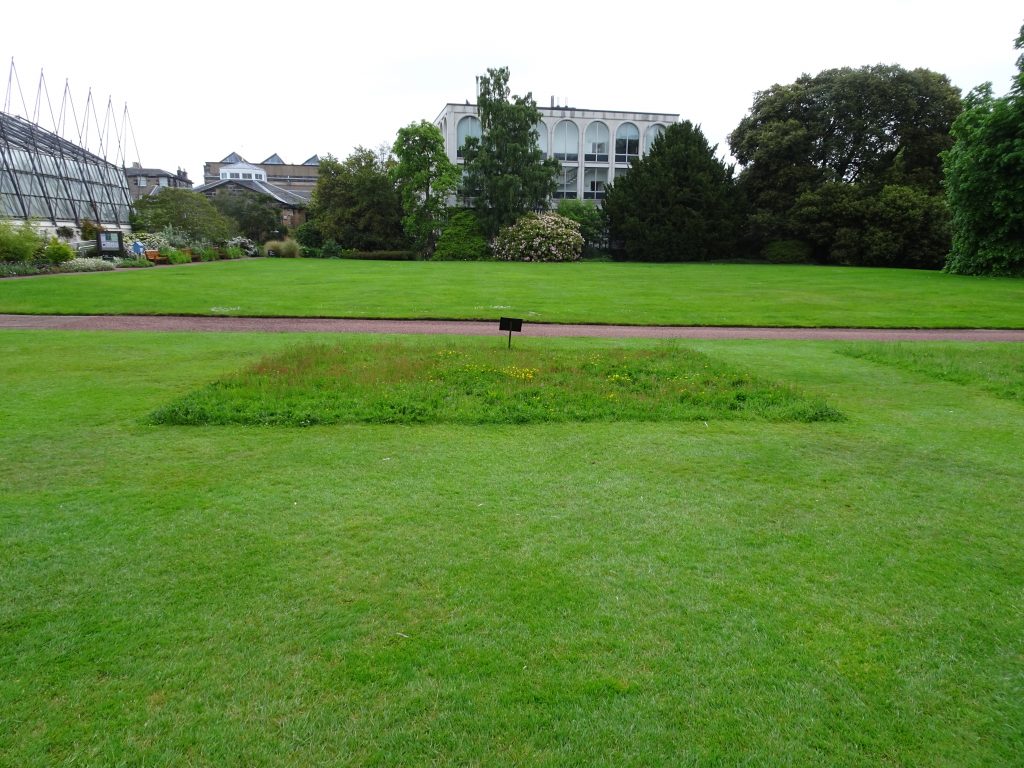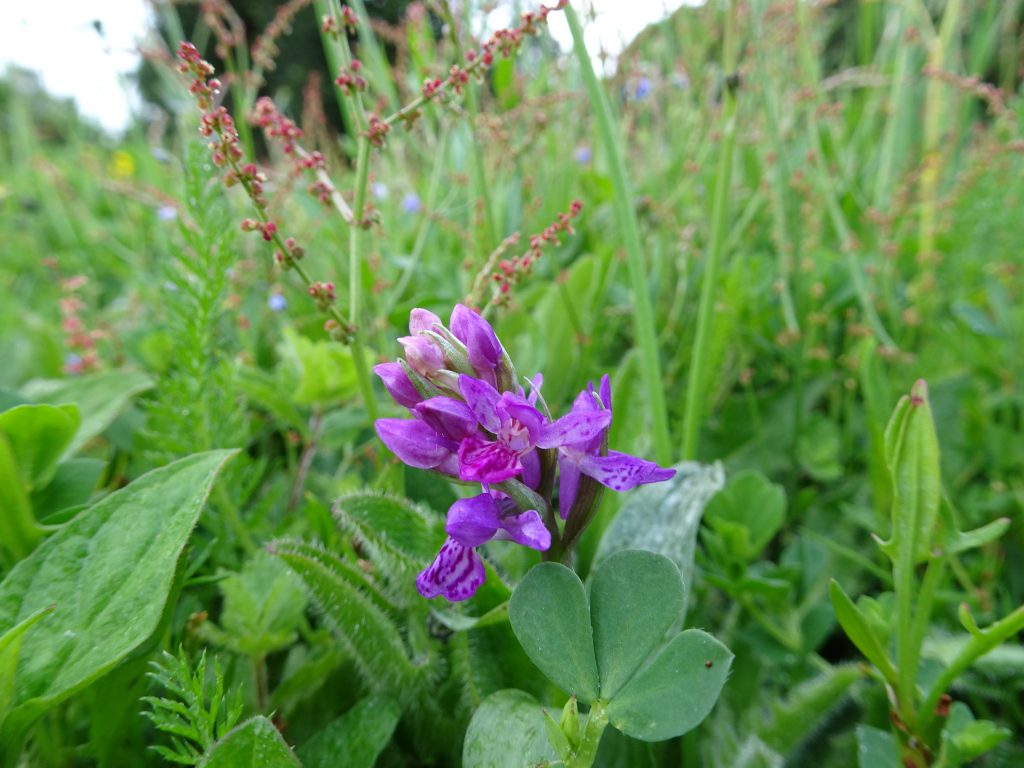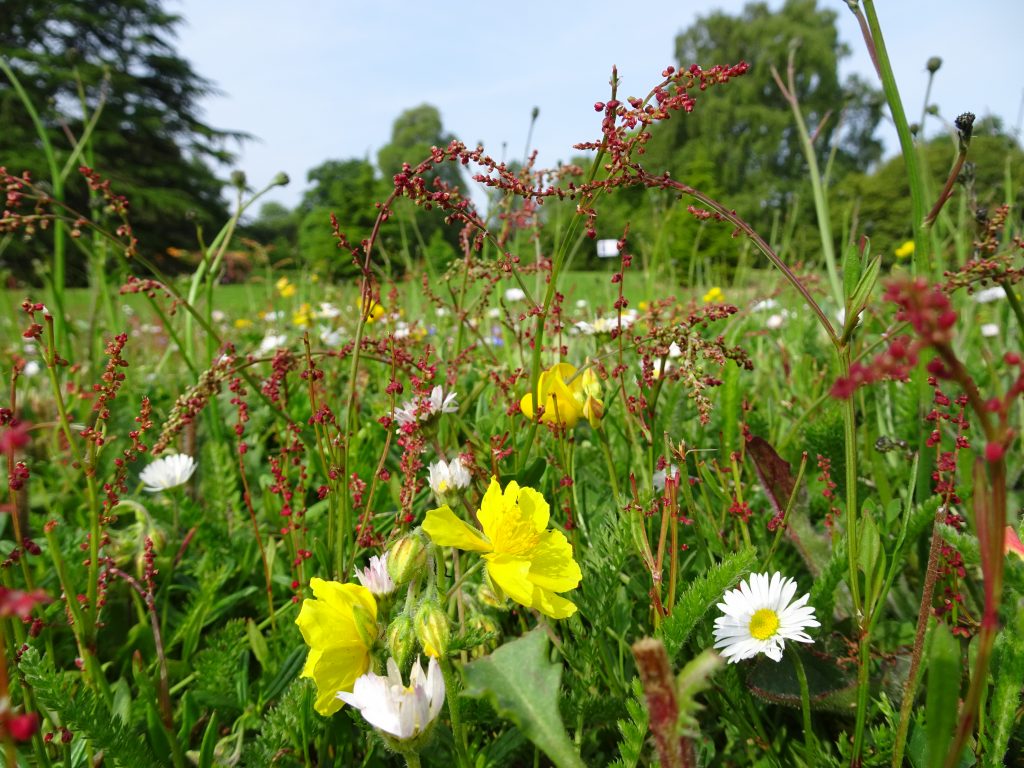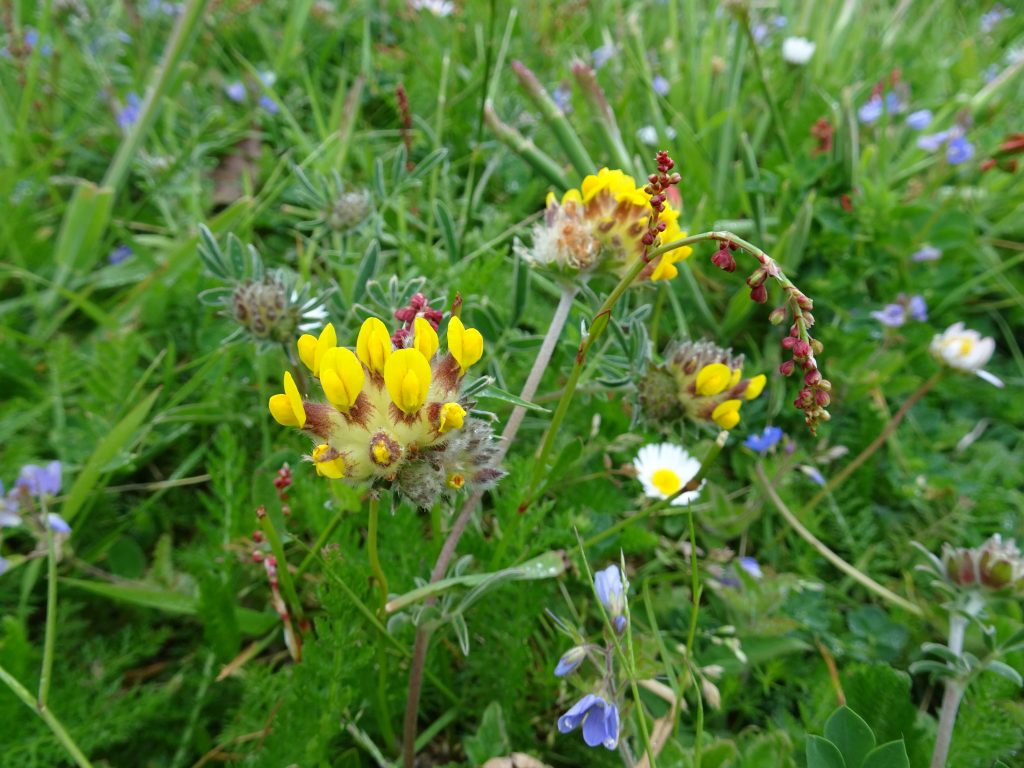Next to the Front Range and within sight of the Library and Herbarium two small squares of lawn have been transformed into flower-rich ‘living lawns’ as part of an experiment to enhance lawns for wildlife. The project, initiated by Edinburgh Living Landscapes, started from the position that people use lawns for walking and sitting, so a short sward had to be maintained.

The existing turf was stripped from the two experimental plots and a seed mix was sown in spring 2016 to establish a richer mix of low-growing wild flowers that would attract pollinators. The exciting development in summer 2019 has been the appearance of a lone northern marsh orchid (Dactylorhiza purpurella). This species of native orchid is quite widely naturalised in the Garden and good numbers appear in the Rock Garden and around the Apline House.

Although orchids have an air of the rare and delicate about them, it’s true to say that some of our more common native species are in fact very quick to colonise any new suitable habitat. They manage this as they have tiny seeds that are only just visible to the naked eye. These seeds can blow over large distances and establish new colonies that can rapidly expand to huge numbers of plants in favourable conditions.
Associations between orchid seeds and widespread fungi in the soil allow the tiny seeds to grow with nourishment from their fungal partner. This particular experiment has demonstrated that orchids in the genus Dactylorhiza can develop from seed to flowering in a very short space of time. This is not a new discovery, but three years is about a quick as one could possibly expect this process to take.

Overall the seed mix sown has taken well and the majority of the species included have established. Species with a habit of horizontal growth, such as common rock-rose and wild thyme, were included as the sward is mown to 10cm fairly regularly. A break in July and August allows taller species to flower. Essentially the management is a compromise that allows some flowering but maintains what people would call a lawn rather than a meadow.

A year ago I wrote a blog about the living lawn experiment in which I mused on the possibility of giving this kind of treatment to other areas of the Garden given the clear benefits to wildlife. The natural colonisation by orchids further supports the view that attractive and colourful living lawns can be rapidly created for the benefit of both wildlife and people.
The Edinburgh Living Landscapes project has made two short films about the living lawns experiment that can be viewed here.
